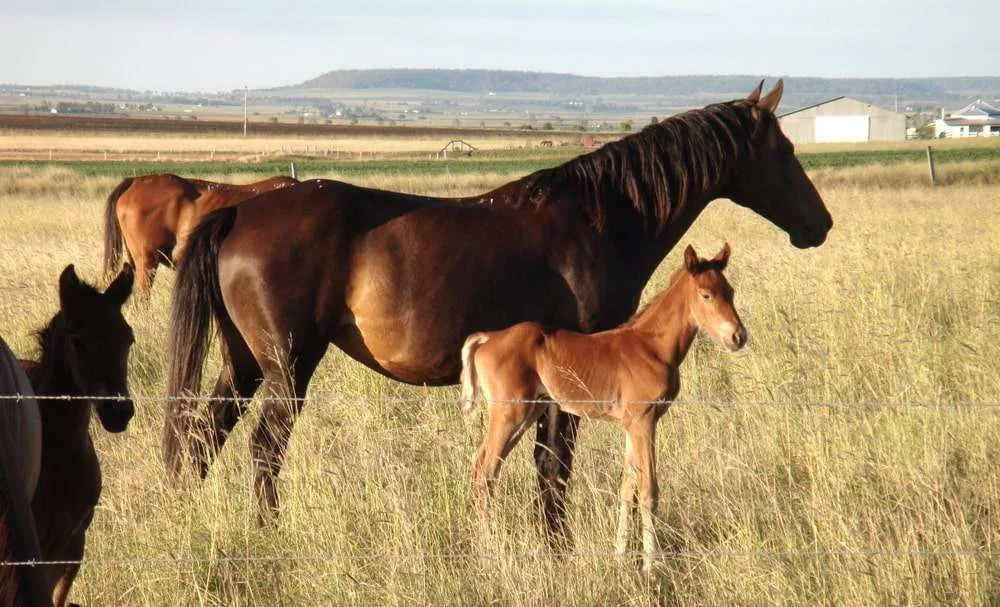This course is an advanced course that is designed to give the student an understanding of both the practical aspects of equine breeding with regard to management of the stallion, mares, breeding and their foals, as well as the management of selective breeding and genetic selection.
The lessons presented include fundamental principles of horse breeding, reproductive anatomy and physiology of the mare and stallion, common breeding practices, principles of artificial insemination and embryo transfer, management of the pregnant mare, indicators of the impending foaling process and parturition, as well as care of the new born foal and reproductive failure in horses.
This course is intended for anyone with an interest in breeding and raising horses, and especially for those individuals wanting to pursue careers as horse breeders, breeding farm owners, stud and stable workers.
Who is the Horse Breeding Course for?
Horse breeders, stud owners, stud and stable workers.
Horse Breeding Course Aims:
- Understand the process of selecting mares and stallions for successful breeding purposes.
- Identify and understand the anatomy and physiology of the mare’s reproductive tract and the physical characteristics, which are preferable for a successful brood mare.
- Identify and understand the anatomy and physiology of the stallion’s reproductive tract and the physical characteristics, which are preferable for a successful breeding stallion.
- Explain and compare different ways of breeding horses.
- Identify and explain the appropriate management of a pregnant mare.
- Understand and explain the foaling process.
- Describe the important care of a new born foal.
- Discuss common fertility problems that can occur in a mare and stallion.
Course Outline
There are 8 Lessons in this course:
1. Breeding Horses
-
- Why breed horses?
- An understanding of heritability is fundamental
- Meiosis
- The Work of Gregor Mendel
- Chromosomes and Genetics in Breeding
- Selecting the mare and the stallion
- Quantitative and Qualitative Inheritance
- Inbreeding and Linebreeding
- The Genetic Effect of Inbreeding
- Line Breeding
- Advantages of Inbreeding
- Stallion and Mare Complementation
- The Industry
2. The Broodmare
-
- Mare Anatomy
- The Reproductive Cycle of the Mare
- Hormonal Control
- Abnormal Oestrus
- Breeding Fitness
- General Broodmare Care
- Nutrition and Feeding
- Rations
- Carbohydrates
- Fat
- Protein
- Vitamins
- Roughage
- Hay
- Pre-Season Care
3. The Stallion
-
- Stallion Anatomy
- Sperm Production
- Semen Release
- Reproductive Cycle of the Stallion
- Breeding Fitness
- General Stallion Care
- Handling
- Pre-Season Care
- Stallion Management for Reproduction
- Training the young stallion
- Steps in training a novice stallion onto the phantom
- Common clinical problems with stallions
- Castration (Gelding)
4. Breeding Management
-
- Managing the Arrival and Departure of the horse at the stud
- Semen from the stallion
- Collection and Processing
- Evaluating the Quality of Sperm
- Breeding methods
- Natural Breeding
- Live cover – In-hand or Pasture
- Artificial insemination
- Handling Frozen Semen
- Embryo transfer
- When to breed
- Detection of Oestrus
- Teasers
- Visual Signs
- A plan for when things go wrong
- Sexually Transmitted Infections
5. The Pregnant Mare
-
- Pre-natal growth
- Conception of twins
- Gestation and Methods and Detecting Pregnancy
- Methods of Diagnosis
- Palpation
- Pregnancy Tests
- Ultrasound
- Post-Natal Growth
6. Parturition and Foaling
-
- Care of the Pregnant Mare
- Nutritional Requirements
- Caslicked Mares
- Preparation for foaling
- Exercise Needs
- Worming
- A deworming program for mares
- Preparation of the foaling environment
- Preparation for if things go wrong
- The Physical Environment – Bedding
- Common Bedding in the Foaling Environment
- Straw
- Wood Shavings
- Wood Pellets
- Rubber Matting
- The Parturition Process
- Stages of Labour
- Common Foaling Problems
- Dystokia
- Abnormal Presentations
- Health Problems of the post-partum mare
- Retained placenta
- Haemorrhage
- Post-Partum Metritis
- Rejection of the Foal
- Prolapsed Uterus
- Lactation (Udder oedema)
- Lactation (reduced milk supply)
- Foal and foaling reports
- Example Foaling Record
- Example Foal Report
7. Care of the New-born Foal
-
- General new born care
- Stabling and safe environment for new born foals
- Lactation and suckling
- Premature Foals
- Orphan foals
- Common health problems in new born foals
- Infections, Constipation and Diarrhoea
- Septicaemia
- Meconium Impaction
- Diarrhoea
- Congenital disorders
- Neonatal Isoerythrolysis (NI)
- Angular Limb Deformities
- Flexor and Extensor Tendon Abnormalities
- Delayed Ossification of the Cuboidal Bones
- Heart Murmurs
- Congenital Papilloma (Warts)
- Entropion
- Neurological disorders
- Neonatal Maladjustment Syndrome (NMS)
- Head Tilt
- Structural abnormalities
- Uroperitoneum
- Umbilical Hernias
- Training a foal in the earliest stages
8. Infertility in the Mare and Stallion
-
- Introduction to Fertility
- Understanding Fertility in Mares
- Understanding Fertility in Stallions
- Handling and Management in Stallions
- Age
- Overuse
- Nutrition
- Illness and Injury
- Other Abnormalities
- Semen problems
- Haemospermia
- Urospermia
- Oligospermia
- Structural disorders of the reproductive tract (mares)
- Pneumovagina
- ‘Maiden Cervix’ or Cervical Incompetence
- Vesicovaginal Reflux or Urine Pooling
- Structural disroders of the reproductive tract (stallions)
- Cryptorchidism
- Testicle Conformation
- Testicular Torsion
- Testicular Tumours
- Scrotal Hernia
- Venereal diseases (mares)
- Endometritis
- Bacterial Endometritis
- Fungal Endometritis
- Mating Induced Endometritis
- Contagious Equine Metritis (CEM)
- Equine Viral Arteritis (EVA)
- Pyometra
- Abnormal Oestrus Cycles
- Silent Heat and Post-Partum Anoestrus
- Persistent Oestrus
- Vernal Transition
- Ovarian Tumours
- Persistent Corpus Luteum
- Haemorrhagic Follicles
- Abortion
- Venereal diseases (stallions)
- Bacterial Infections
- Equine Viral Arteritis (EVA)
- Equine Coital Exanthema
- Dourine
- Contagious Equine Metritis (CEM)
- Infectious causes of abortion (mares)
- Viral Abortion
- Bacterial Abortion
- Leptospirosis
- Non-infectious causes of abortion (mares)
- Congenital Defects
- Twinning
- Umbilical Cord Torsion
- Progesterone Deficiency

